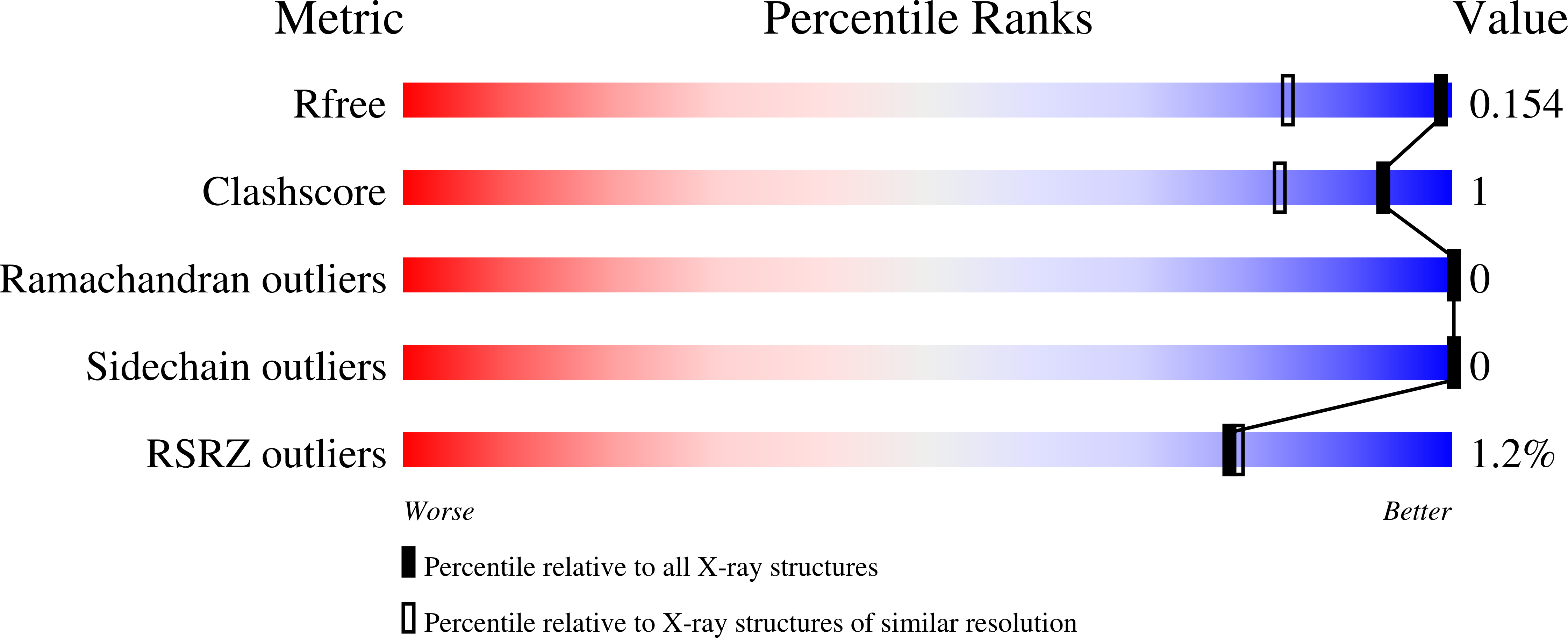Adding a Hydrogen Bond May Not Help: Naphthyridinone vs Quinoline Inhibitors of Macrophage Migration Inhibitory Factor.
Dawson, T.K., Dziedzic, P., Robertson, M.J., Cisneros, J.A., Krimmer, S.G., Newton, A.S., Tirado-Rives, J., Jorgensen, W.L.(2017) ACS Med Chem Lett 8: 1287-1291
- PubMed: 29259749
- DOI: https://doi.org/10.1021/acsmedchemlett.7b00384
- Primary Citation of Related Structures:
6B1C, 6B1K, 6B2C - PubMed Abstract:
Coordination of the ammonium group of Lys32 in the active site of human macrophage migration inhibitory factor (MIF) using a 1,7-naphthyridin-8-one instead of a quinoline is investigated. Both gas- and aqueous-phase DFT calculations for model systems indicate potential benefits for the added hydrogen bond with the lactam carbonyl group, while FEP results are neutral. Three crystal structures are reported for complexes of MIF with 3a , 4a , and 4b , which show that the desired hydrogen bond is formed with O-N distances of 2.8-3.0 Å. Compound 4b is the most potent new MIF inhibitor with K i and K d values of 90 and 94 nM; it also has excellent aqueous solubility, 288 μg/mL. Consistent with the FEP results, the naphthyridinones are found to have similar potency as related quinolines in spite of the additional protein-ligand hydrogen bond.
Organizational Affiliation:
Department of Chemistry, Yale University, New Haven, Connecticut 06520-8107, United States.





















